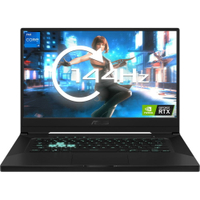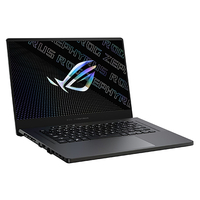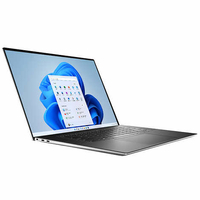TechRadar Verdict
While it might be a bit expensive, Corsair’s very first laptop is a solid proposition; good performance, robust build quality, and a truly excellent keyboard all serve to make this a great choice of gaming laptop. The 16:10 screen and large trackpad make it great for productivity too, even if it could use a few more ports.
Pros
- +
Solid QHD gaming performance
- +
Incredible mechanical keyboard
- +
Big screen with a high refresh rate
- +
Sturdy but stylish design
Cons
- -
Quite expensive
- -
Needs more ports
- -
Touch bar display is underutilized
Why you can trust TechRadar
Corsair Voyager: Two-minute review
Corsair isn’t exactly new to the computer hardware sphere, having been on the block for almost three decades now. But with the Corsair Voyager a1600, the piratical PC brand is doing something it’s never attempted before: a Corsair gaming laptop, aiming to marry the manufacturer’s powerful internal components with an innovative chassis. But is it one of the best gaming laptops?
Specs-wise, the Voyager certainly has some serious chops. Corsair designed this new laptop in partnership with AMD, so it naturally comes packed with Team Red’s own CPU and GPU - in the case of our review unit, that’s the Ryzen 9 5900HS and the Radeon RX 6800M. The RAM and local storage are naturally Corsair originals, the former offering speedy DDR5 in line with most high-end gaming laptops in 2022.
And make no mistake - this is certainly a high-end product. The $3,000 price tag on our review model speaks for itself, placing this laptop in the same realm as powerful offerings from the likes of Razer and Asus. Thankfully, the gaming performance and excellent build quality do a lot to justify the asking price.
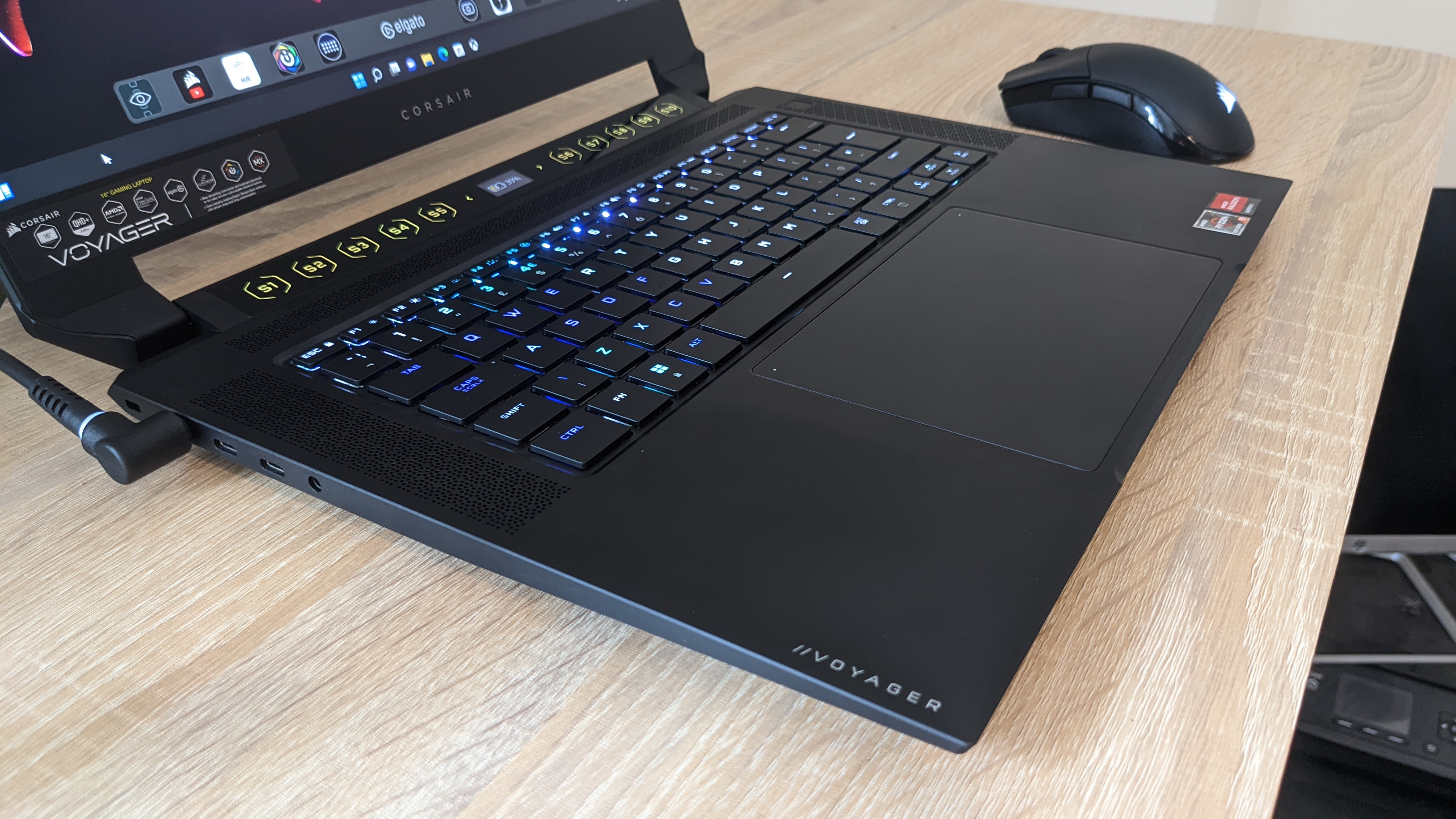
From the moment you unbox it, the Corsair Voyager feels a little bit different. The first thing you’re likely to notice is the large screen; this is a 16-inch QHD panel with a 16:10 aspect ratio, making it taller than the average display and smaller only than a handful of 17-inch laptops. That display is further elevated away from the base of the laptop to make room for a thick bar containing ten touch buttons, with a tiny liquid crystal display in the center.
This is ostensibly the Voyager’s main USP; the S-Key Macro Bar might lack a catchy name, but it essentially serves as a miniature Elgato Stream Deck, allowing you to map macros to the RGB-backlit touchbar for instant access to various programs. The pre-loaded selection is very streamer-focused, letting you open up OBS or the Elgato camera hub at the touch of a button, but you can customize it to fulfill different functions if you wish.
Combined with an incredible low-profile mechanical keyboard, a massive trackpad, and a 1080p webcam, this all makes for a seriously good laptop for the discerning gamer. If you’re mad about esports or just like to stream while playing The Sims, this could be the best laptop for you.
Corsair Voyager: Price and availability
- Base model costs $2,699
- Version tested costs $2,999
- Only two versions currently available in the US
Here is the Corsair Voyager a1600 configuration sent to TechRadar for review:
CPU: AMD Ryzen 6900HS
Graphics: AMD Radeon RX 6800M 12GB
RAM: 32GB DDR5-4800
Screen: 16-inch 2560x1600, 240Hz, IPS
Storage: 2TB PCIe Gen4 SSD
Ports: 2x USB-C 4, 1x USB-C 3.2 Gen 2, 1x USB-A 3.2 Gen 2, SD card reader, combi audio jack
Connectivity: Wi-Fi 6E, Bluetooth 5.2, Integrated Corsair Slipstream Wireless
Camera: 1080p IR webcam
Weight: 2.4 kg
Size: 2.0 x 35.6 x 28.7 cm
At $2,999 (£2,999/about AU$4,335), the Corsair Voyager a1600 isn’t exactly cheap. At present, there’s no official details on how much the Voyager will cost outside the US, nor which other models might be produced for different territories. The review unit we’ve got here is the flagship model, but a cheaper ($2,699/£2,699) version is also available.
There’s not a massive amount of difference between the two models; the extra $300 gets you double the storage, double the RAM, and a slightly upgraded processor. For what it’s worth, since both versions have the same Radeon GPU, we’d say that the cheaper one might be slightly better value for money as performance shouldn’t be hugely lower. This is an assumption on our part, though, since we only have the $2,999 model to review.
Whichever way you look at it, it’s pricey. The Voyager sits close to the like of Razer’s Blade 15 and 17 series; sure, it’s got premium components and a stylish design, but if you just want a straightforward gaming laptop, there are options out there from the likes of MSI, Gigabyte, and Acer that will give you more bang for your buck.
- Value: 3/5
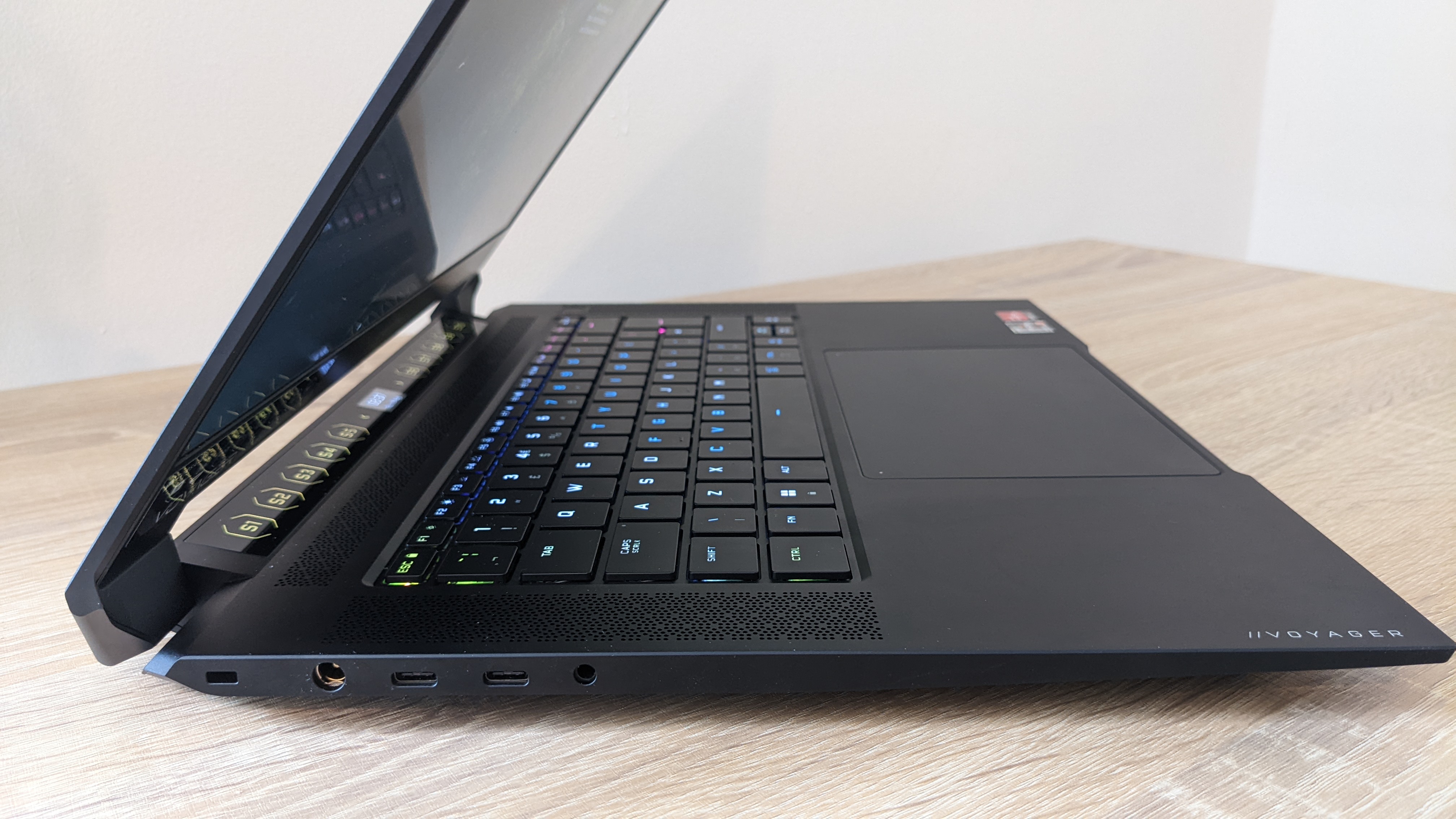
Corsair Voyager: Design
- Sturdy, well-designed chassis
- Keyboard is absolutely fantastic
- Could use more ports
Corsair knows how to build good-looking but robust hardware; if you’re in any doubt about that, check out its ridiculously compact and sleek Corsair One desktop PCs. The Voyager is no exception; the machined metal chassis feels durable, with a sturdy hinge and surprisingly low weight of 2.4kg - not exactly ultralight, but less heavy than some gaming laptops.
That chassis can be easily unscrewed on the underside to replace the storage and memory at your leisure, should you decide you want to upgrade later on - a great design decision that more laptop makers should adopt. The dark metal exterior looks good, though it can pick up fingerprints like Razer’s Blade laptops do. There’s also a nice fabric carry case that comes included in the box.
With the lid closed, you can still see the S-Key touchbar and its diminutive central display, but the lights turn off so it’s a bit redundant. When opened up, though, it illuminates brightly to match the Capellix LEDs of the keyboard backlighting, which looks great.
Let’s dwell on this keyboard for a moment, because we really can’t stress enough how good it is. Most laptops use membrane keyboards, which are squishier and generally less precise than mechanical keyboards - but the Corsair Voyager a1600 boasts a mechanical 80%-scale keyboard. It uses Cherry MX Ultra-Low Profile key switches to maintain the laptop’s slim design, and the tactile sensation of typing or gaming on these keys is truly superb. The only laptop keyboard that we think even comes close is the Gigabyte Aorus 17G.
The trackpad is also good. It’s huge, which is a great starting point, but also feels very responsive and has a good firm click. You can double-tap in the top corners to lock either the whole trackpad or just the right-hand side, which is a more reliable alternative the often-dodgy palm rejection found on many gaming laptops.
Elsewhere, we’ve got a 1080p webcam (with a physical privacy shutter and IR for logging in with your face via Windows Hello), a multi-microphone array, and some fairly powerful internal speakers that blast from grilles that surround the keyboard along three edges. These speakers are custom-tuned with Dolby Atmos support, and they’re definitely above average for laptop sound quality.
The only thing we really feel is missing from the Voyager’s physical design is a few more ports. Sure, we’ve got three USB-C ports (two of which are Thunderbolt 4 enabled for power delivery or video output), but only a single USB-A? An SD card reader, but no Ethernet or HDMI port? It’s a little strange, but feels like less of a blow considering one of the Voyager’s other key features…
- Design: 4/5
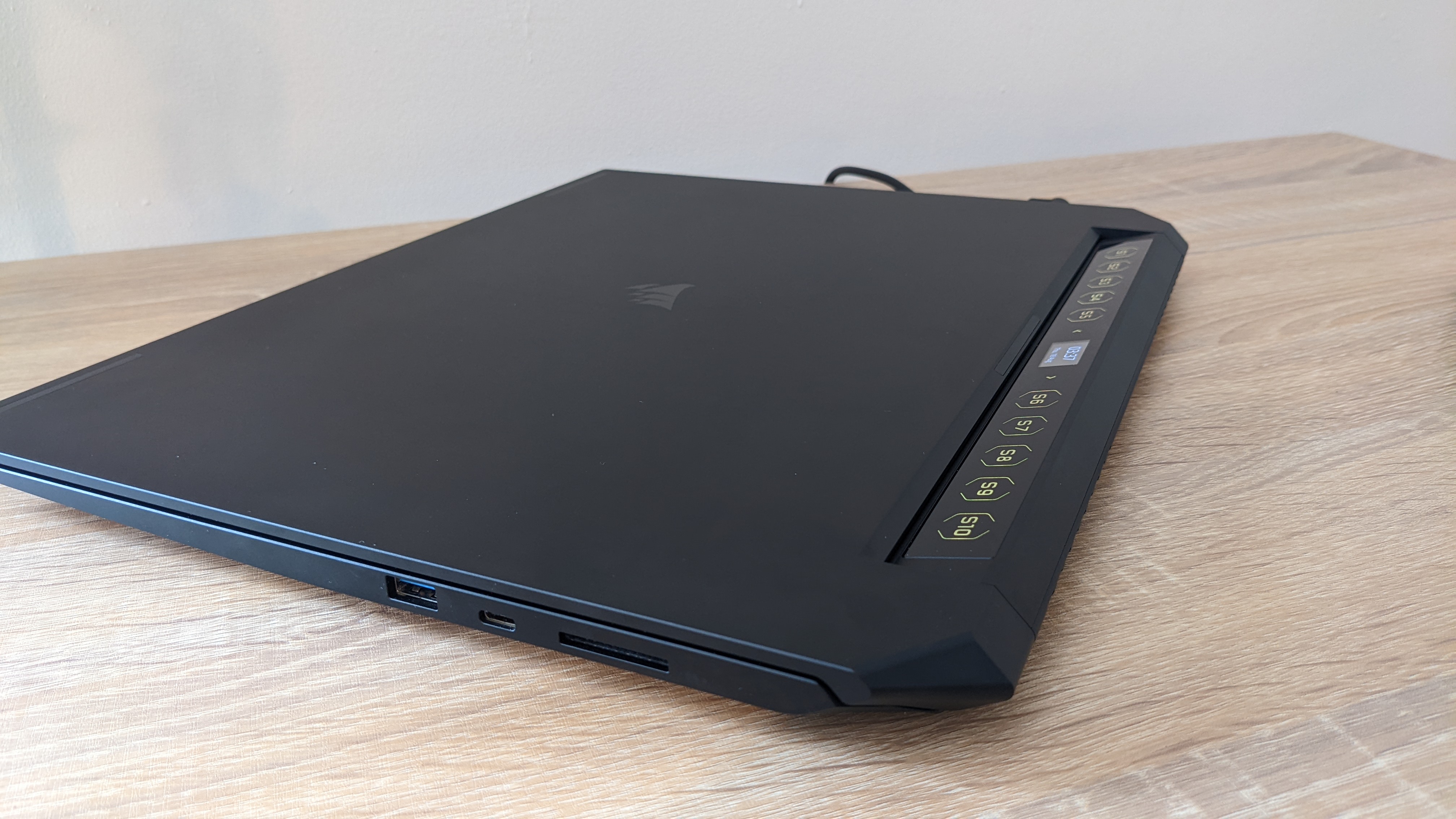
Corsair Voyager: Features
- Slipstream connectivity is nifty
- Display is sharp and fast
- Touchbar display doesn’t really do much yet
Yes, we’re talking about Corsair’s Slipstream tech now. For those not in the know, Slipstream is a proprietary wireless connection standard, which allows you to connect multiple Corsair peripherals to a single USB dongle. It uses smart frequency-shifting to deliver ultra-low-latency wireless performance for mice, keyboards, and headsets, providing a strong connection with excellent range.
As you might have guessed, the Corsair Voyager has a Slipstream adapter concealed inside its chassis, which makes connecting multiple compatible Corsair devices an absolute cinch. We had a Virtuoso headset and a Sabre mouse hooked up and running perfectly within seconds without needing a dongle or a trip into the Bluetooth settings, which we have to admit is pretty awesome. In terms of other wireless connectivity, the Voyager packs Bluetooth 5.2 and speedy Wi-Fi 6E functionality.
Slipstream cleverness aside, the Voyager has a lot of great features to offer. The main display is sharp and colorful; the speedy 240Hz refresh rate and 3ms response time will endear it to hardcore gamers, but the 100% sRGB color reproduction makes it attractive to artists and photo editors as well. The 16:10 aspect ratio actually makes it great for work, too, since you can fit more of a document or webpage on the screen without needing to scroll.
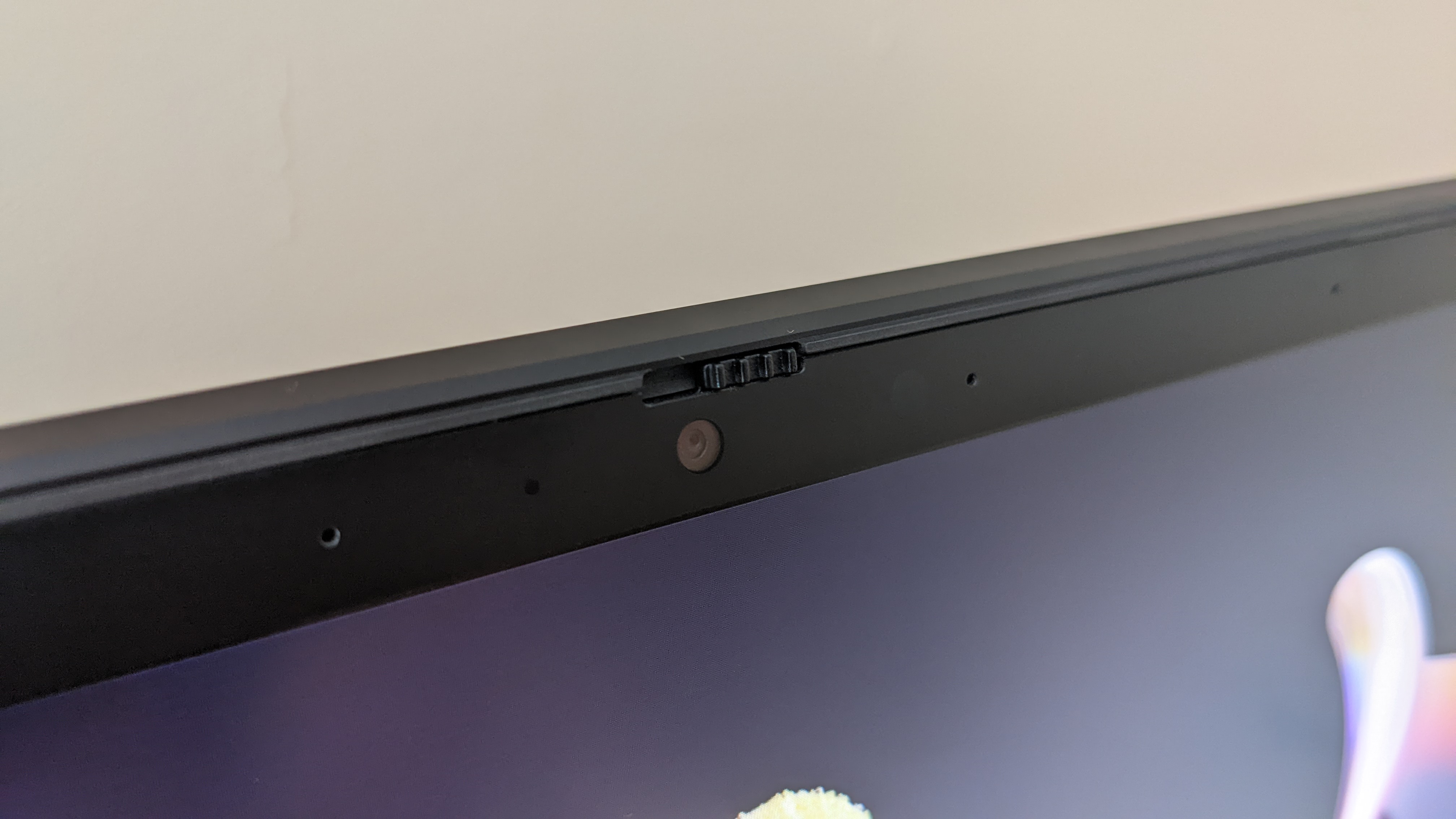
While the ten main buttons of the touchbar can be programmed to do (almost) whatever you want, they initially link to a wealth of pre-installed software. It essentially provides shortcuts not just to Corsair’s own iCue and Stream Deck software, but stuff like OBS, Dolby Atmos, Voicemod, and the Camera Hub. While we often decry bloatware on gaming laptops, we have to admit that most of this stuff would actually be really useful to a regular streamer - and that’s clearly a big part of the target audience here.
The touchbar also features a teeny tiny display in the centre, and we’ll be honest - this doesn’t do much. By default it just shows the Corsair logo, but you can switch between different ‘screens’ by tapping either side of it. Currently, there are three widgets it can use: the battery level, date and time, and CPU load. You can also set an image to be displayed; naturally, we added a gif of Shadow the Hedgehog firing an assault rifle and screaming.
The bottom line here is that this little screen doesn’t really do much. Sure, you can keep an eye on your battery life while gaming, but you’re only ever an Alt-Tab away from doing that normally. There’s potential here for Corsair to expand its capabilities with future updates to iCue, but right now it just feels like an unnecessary inclusion.
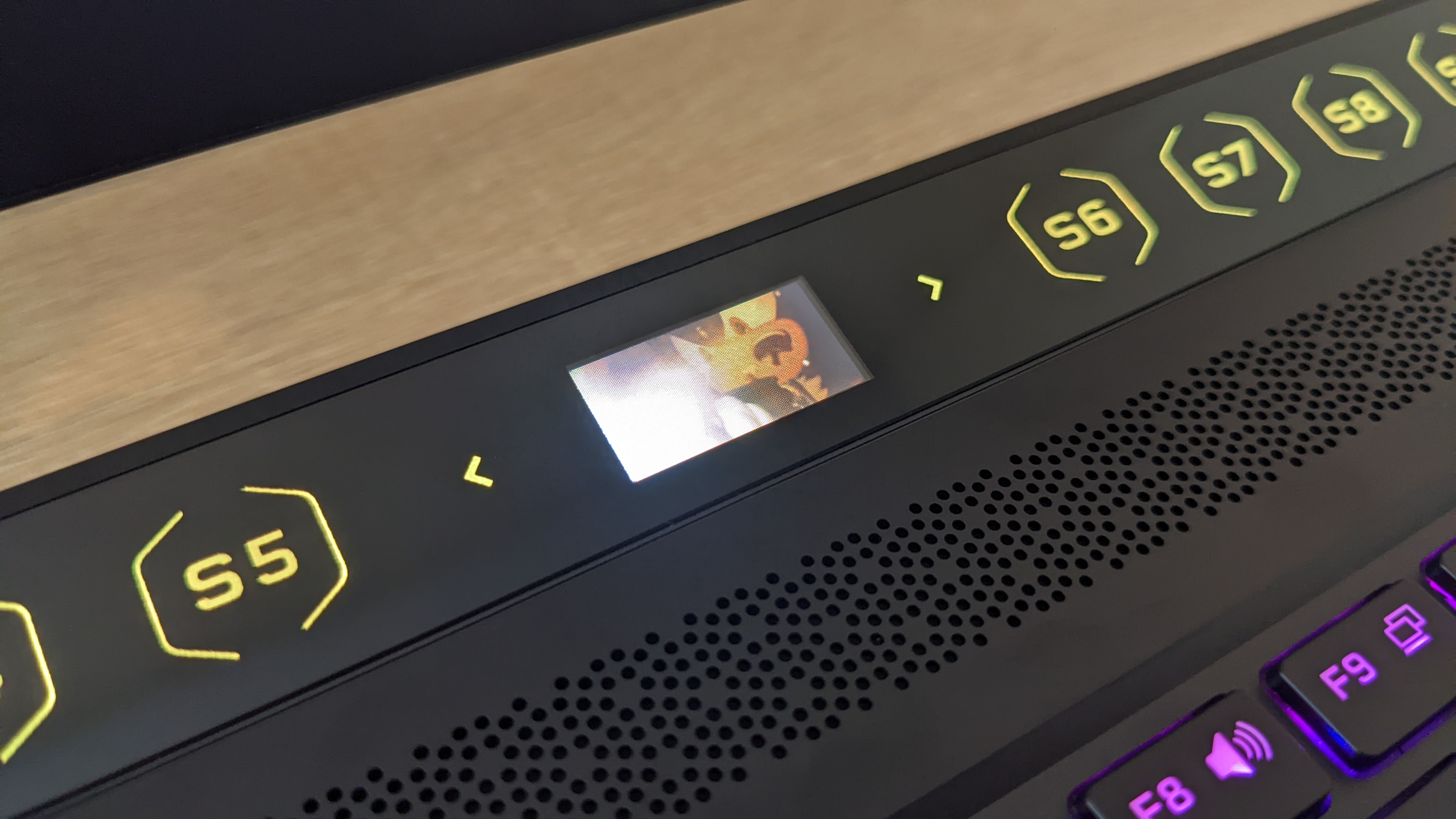
- Features: 4/5
Corsair Voyager: Performance
- Playable at QHD Ultra; can hit 60+fps with AMD FSR
- General CPU performance is strong
- Fans can get quite noisy
Here's how the Corsair Voyager a1600 performed in our suite of benchmark tests:
3DMark Night Raid: 59,475; Fire Strike: 22,134; Time Spy: 8,777
Cinebench R20 multi-core: 5,356
GeekBench 5: 1,529 (single-core); 9,882 (multi-core)
PCMark 10 (Modern Office): 7,797
PCMark 10 (Battery life test): 6 hours and 12 minutes
TechRadar Battery Life Test: 6 hours and 50 minutes
Total War: Warhammer III (1600p, Ultra): 43 fps; (1600p, Low): 99 fps
Cyberpunk 2077 (1600p, Ultra): 43 fps; (1600p, Low): 92 fps
Dirt 5 (1600p, Ultra): 52 fps; (1600p, Low): 154 fps
We were pretty impressed with how well the Radeon RX 6800M graphics card inside the Corsair Voyager performed. Because of the 16:10 display, the usual 1440p QHD resolution is actually 1600p, which means that framerates take a slight hit compared to conventional 16:9 laptops. You wouldn’t know it, though; the Voyager can hit playable framerates in all the latest games at Ultra settings in its native resolution.
It’s not a consistent 60+fps, but it only takes a small amount of graphical tweaking to achieve that holy grail of game framerates. Note that all of our tests are run without FidelityFX Super Resolution (FSR), AMD’s answer to Nvidia’s powerful DLSS upscaling tech. In Cyberpunk 2077, simply turning on Performance mode in FSR 1.0 saw our average fps rise from 43 to a whopping 102 at Ultra settings. FSR isn’t available for all games, though, so bear that in mind.
Ray-tracing performance is alright, even if Nvidia definitely still has the edge here. Beyond gaming, the Voyager’s Ryzen processor excelled in a variety of areas, demonstrating itself as a competent workhorse for all kinds of tasks. The internal drive offers the rapid transfer speeds we’ve come to expect from Corsair’s high-end SSDs, too.
It’s hard to deny that the Voyager gets a bit loud when running demanding games or programs. The fans have an audible whirr even during regular use, and ramp up to a serious racket if set to ‘extreme’ mode. It does serve to keep the laptop from getting too warm, which is good, but you’ll likely want to use the ‘quiet’ mode when you’re around other people and this will impact gaming performance a little. It’s a common problem amongst gaming laptops these days, so we can’t judge the Voyager too harshly for it.
- Performance: 5/5
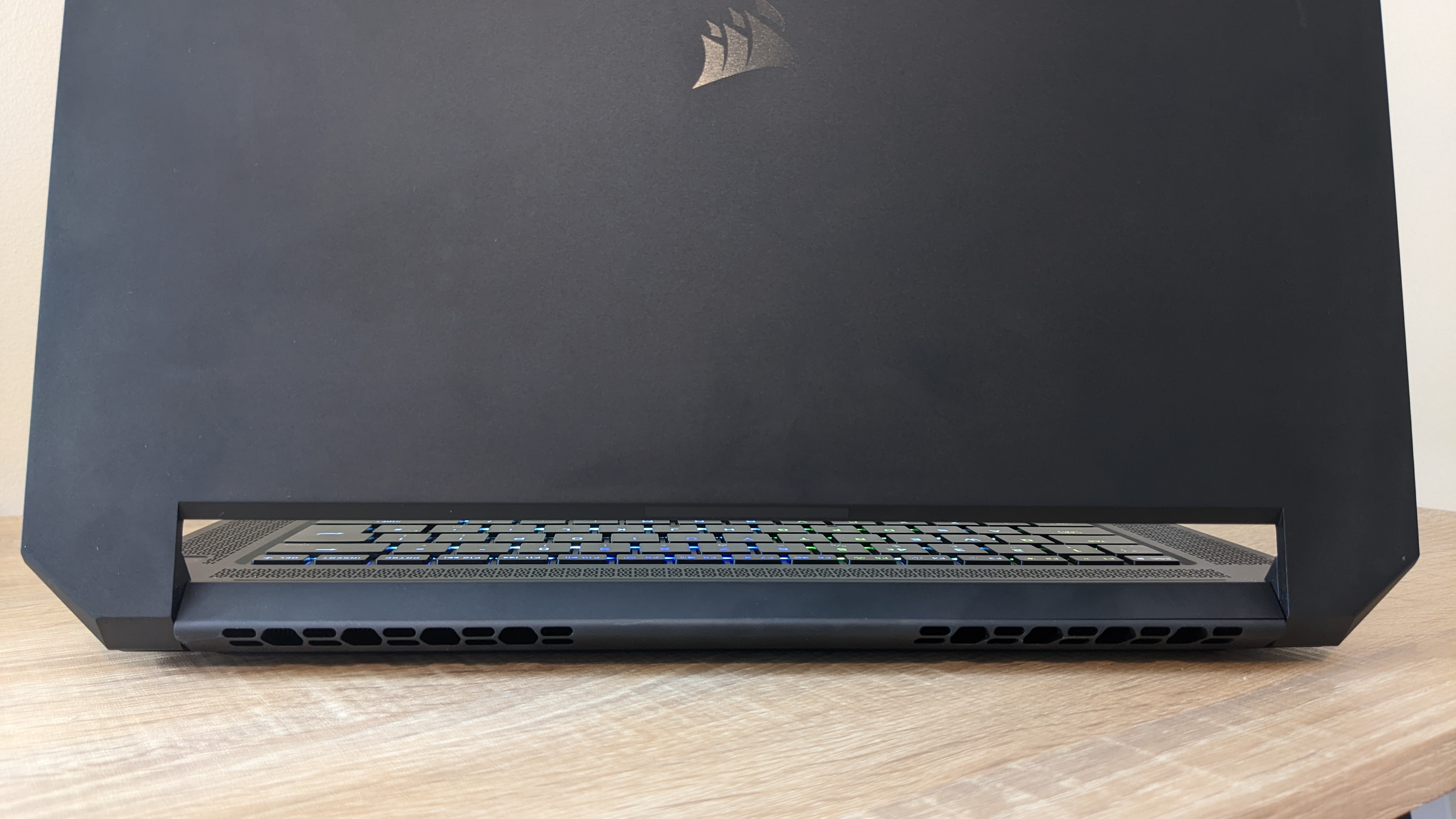
Corsair Voyager: Battery life
- Up to 2 hours of serious gaming
- Around 6-7 hours of general use
- Graphics mode-switching is annoying
Gaming laptops are seldom recommended by anyone for their stellar battery life, and the Corsair Voyager a1600 certainly fits the bill there - though it does sit at the higher end of the battery longevity scale when it comes to gaming systems. In our testing, it was able to last for more than six hours of general day-to-day work at 50% brightness.
If you want to game, it’s going to be a lot shorter, but that’s par for the course. You should be able to comfortably squeeze two hours of continuous gaming out of this laptop without resorting to minimum brightness and eco battery mode, which is actually pretty decent. The AC adapter isn’t too bulky, and the battery charges to full pretty fast.
One minor annoyance is AMD SmartShift, a feature of AMD’s Radeon Software that automatically swaps between using the CPU’s integrated graphics and the proper GPU graphics in order to provide the best performance when needed and save battery when not. It’s a good idea that works in theory, but whenever it activates there’s almost a full second of latency where the screen appears to freeze. We ended up turning it off, because it was just annoying.
- Battery life: 4/5
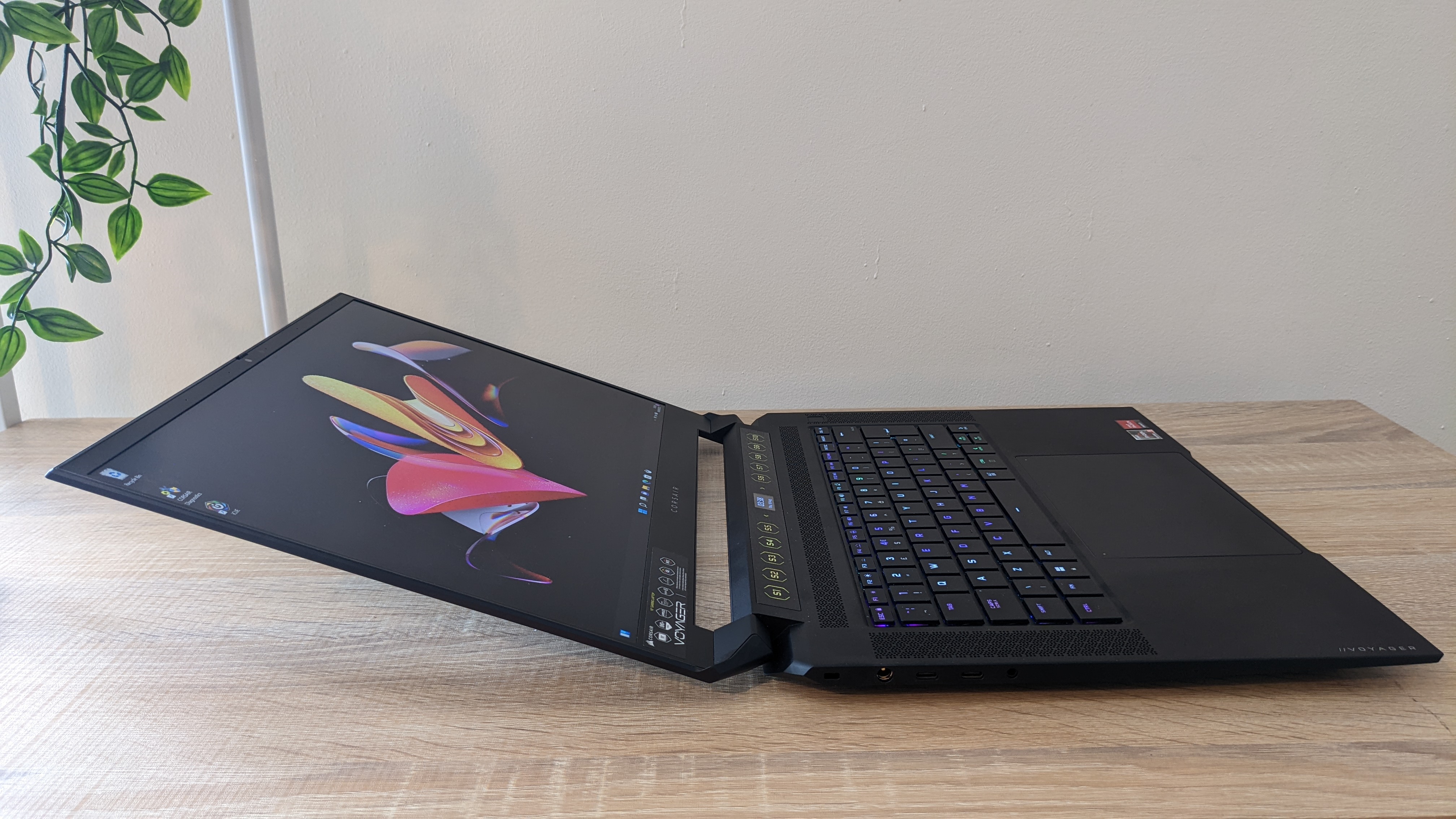
Should you buy a Corsair Voyager a1600?
Buy it if...
You’re a streamer
With the touch bar, 1080p webcam, and streaming-focused software pre-installed, the Corsair Voyager feels like it’s perfectly suited to Twitch streamers who don’t want to buy a whole desktop setup. Despite its high price, it’s definitely cheaper than buying a full streaming rig.
You want the best laptop keyboard
We could wax lyrical about the Voyager’s gorgeous keyboard all day. It just feels so damn good to use, whether you’re typing or gaming. The tactile key switches might be a little noisier than the average laptop keyboard, but we simply don’t care.
You love AMD hardware
AMD tech powers both the processor and GPU of this laptop to good effect, so if you’re Team Red all the way, this is the laptop for you. Corsair currently has a running partnership with AMD, so future models of the Voyager might run on Ryzen and Radeon too.
Don't buy it if...
You want good value for money
Let’s be honest, this is a common criticism of gaming laptops, but it’s still a valid one here. The Voyager looks, feels, and performs great, but it’s undeniably a very expensive purchase that we simply can’t recommend to anyone shopping on a budget.
You want lots of ports
We could forgive the lack of Ethernet for wired Internet connectivity and the missing HDMI port can be remedied via the Thunderbolt 4-enabled USB-Cs, but only one USB-A port? Come on, Corsair, people still use those.
You need some peace and quiet
They’re not the loudest we’ve ever heard on a gaming laptop, but the Corsair Voyager does have some pretty noisy fans. At the very least, they do prevent the exterior of the chassis from becoming too hot.
Also consider...
Asus TUF Dash F15
If you're looking for a gaming laptop that's a bit more budget-friendly, the Asus TUF Dash F15 is the way to go. It's a bit bulkier and less powerful than the Voyager, but much cheaper - providing incredible performance for your money.
Read our full Asus TUF Dash F15 review
Asus ROG Zephyrus G15
The Zephyrus G15 is probably the very best gaming laptop you can buy right now, with high-quality performance and design at an extremely competitive price. The only thing it lacks is a webcam - no video calls here.
Read our full Asus ROG Zephyrus G15 review
Dell XPS 17 (2022)
If a big screen is what you're looking for, consider the Dell XPS 17, which has an even larger display than the Voyager - although it's less of a gaming machine, so if you want top-tier framerates you might be better suited with Razer's Blade 17.
Read our full Dell XPS 17 (2022) review
Corsair Voyager: Report card
| Value | Sure, there are more expensive laptops out there, but the Voyager certainly ain't cheap. | 3 / 5 |
| Design | The chassis is nice and sturdy and the keyboard is incredible, but some more ports would be nice. | 4 / 5 |
| Features | Slipstream allows for instant connectivity with Corsair devices, but the tiny LCD is underutilized. | 4 / 5 |
| Performance | Generally excellent gaming and productivity performance, further improved by AMD FSR. | 5 / 5 |
| Battery Life | Not the best battery life, but reasonably good for a beefy gaming laptop. | 4 / 5 |
| Total | Considering this is a first attempt, the Corsair Voyager is pretty awesome. We can't wait to see what Corsair does next. | 4 / 5 |
- First reviewed August 2022
How We Test
We pride ourselves on our independence and our rigorous review-testing process, offering up long-term attention to the products we review and making sure our reviews are updated and maintained - regardless of when a device was released, if you can still buy it, it's on our radar.

Christian is TechRadar’s UK-based Computing Editor. He came to us from Maximum PC magazine, where he fell in love with computer hardware and building PCs. He was a regular fixture amongst our freelance review team before making the jump to TechRadar, and can usually be found drooling over the latest high-end graphics card or gaming laptop before looking at his bank account balance and crying.
Christian is a keen campaigner for LGBTQ+ rights and the owner of a charming rescue dog named Lucy, having adopted her after he beat cancer in 2021. She keeps him fit and healthy through a combination of face-licking and long walks, and only occasionally barks at him to demand treats when he’s trying to work from home.

